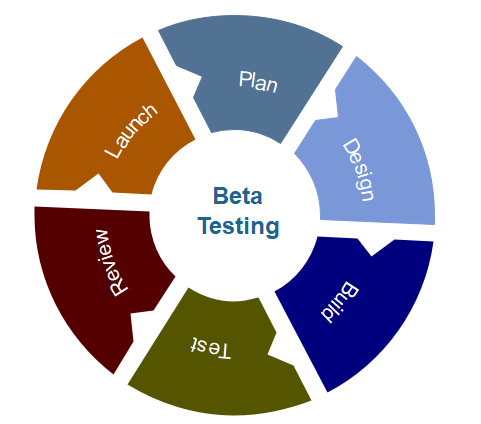Beta Testing
What is Beta Testing?
Definition:
Beta testing is a crucial phase in the software development lifecycle, during which a pre-release version of a product is made available to a select group of users, known as beta testers. The primary goal of beta testing is to gather real-world feedback, identify bugs or issues, and ensure the product’s stability before its official launch. This testing phase helps developers refine and improve the software based on user experiences and feedback.
Analogy:
Think of beta testing as a dress rehearsal for a play. Just as actors perform in front of a select audience to fine-tune their performance before the official opening night, beta testing allows developers to refine their software based on user feedback before the public release.
Further Description:
Beta testing involves several key elements:
Closed Beta Testing: A limited number of users are invited to test the software before its public release. This allows developers to control the testing environment and gather targeted feedback.
Open Beta Testing: The software is made available to a broader audience, often the general public. This phase helps identify a wider range of issues and ensures the product’s compatibility with diverse user environments.
Types of Beta Testing: This can include functional testing to ensure features work as intended, usability testing to evaluate the user interface, and performance testing to assess the software’s responsiveness under different conditions.
Feedback Collection: Beta testers provide valuable feedback on their experiences with the software, reporting bugs, suggesting improvements, and highlighting areas of concern.
Why is Beta Testing Important?
Bug Identification: Beta testing helps uncover bugs and issues that might not have been apparent during the development and testing phases, improving the overall quality of the software.
User Experience Enhancement: Gathering feedback from real users allows developers to make user-centric improvements, ensuring a smoother and more intuitive user experience.
Stability Assurance: Beta testing helps identify and address potential stability issues, ensuring that the software performs reliably in diverse environments.
Product Confidence: Successful beta testing builds confidence in the product’s quality, reducing the risk of critical issues arising post-launch.
Examples and Usage:
Google’s Android Beta Program: Google allows users to test pre-release versions of the Android operating system, providing valuable insights and feedback to improve the final release.
Apple’s Developer Beta Programs: Apple offers beta versions of iOS and macOS to developers before the official release, enabling them to test their apps for compatibility and report issues.
Video Game Beta Testing: Game developers often conduct beta tests to gather player feedback, identify gameplay issues, and ensure a smooth gaming experience on different platforms.
Key Takeaways:
- Beta testing involves releasing a pre-release version of software to a group of users for real-world testing.
- It helps identify bugs, enhances the user experience, and assures the stability of the product.
- Types of beta testing include closed beta (limited users) and open beta (broader audience).
- Successful beta testing builds confidence in the product and reduces the risk of post-launch issues.
Table of Contents





